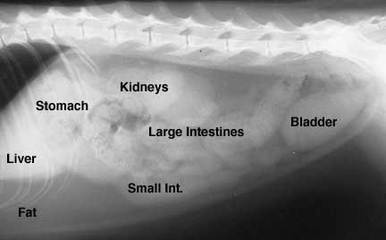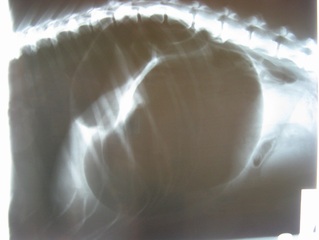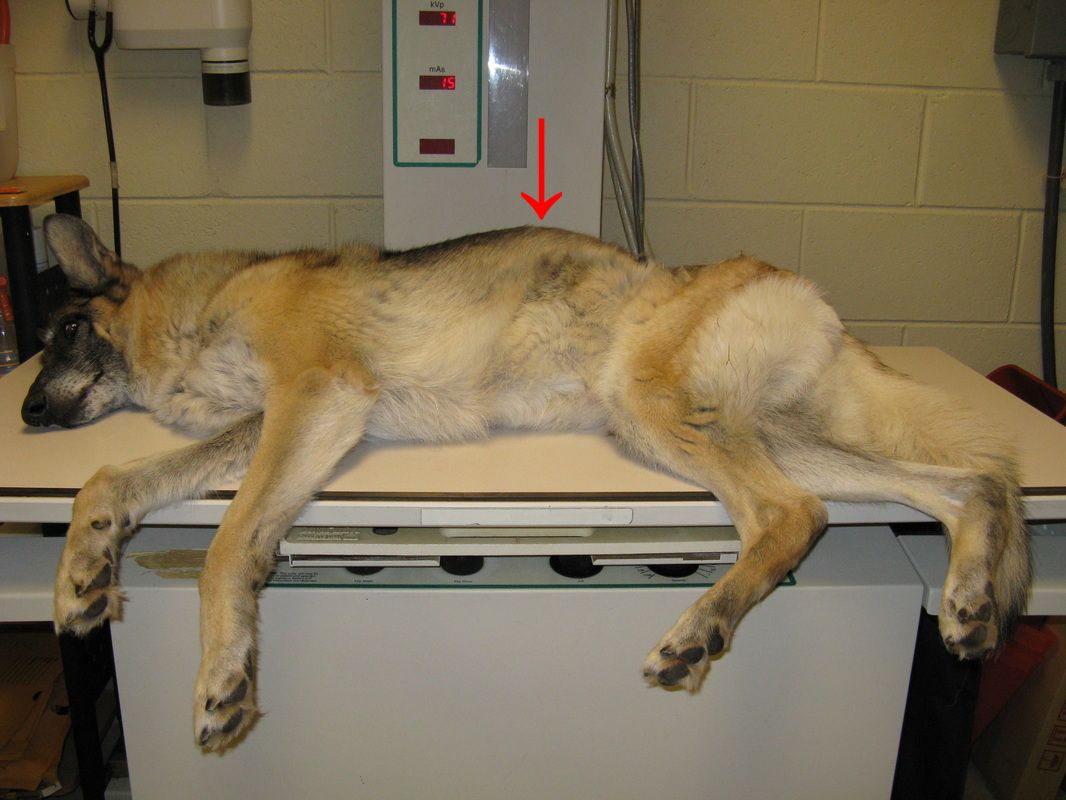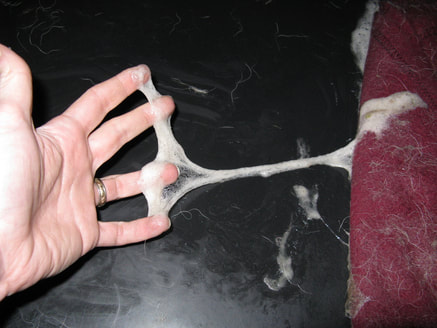- About Us
- Luvakis Rhodesian Ridgebacks
- Current Litter
- Planned Breedings
-
About Our Puppies
-
Information and Articles
- Breed History
- AKC Information
- AKC Breed Standard
- Important Links
- Dog Stuff We Can't Live Without!
- Recommended Readings
- Finding the Right Breeder
- One Puppy or Two?
- Dogs and Kids (Reading Canine Body Language)
- Tutorials: Ear Taping, Ear Wounds, Nail Dremeling >
- Collar Entrapment, Strangulation and CPCR Techniques Article
- What Does Bloat (GDV) Look Like?
- Contact Us
What is Gastric Dilatation-Volvulus or Bloat?
The radiograph on the right is of our German Shepherd Dog, "Flash". We lost him to GDV in 2012.
This is not an uncommon medical emergency that most often strikes large, deep-chested dogs.
Although Flash typically weighed in at only 65#, he is considered a large (even giant) breed dog due to the depth of his chest.
Flash quickly deteriorated in the 1 hour between on-set of symptoms and arrival at the Pet Emergency Center.
He was humanely euthanized due to age, suspected cause of his condition, and subsequent poor prognosis.
If you suspect your dog is exhibiting early symptoms of GDV:
- distended abdomen
- stretching (play bow position)
- reluctance to lay down, pacing
- reluctance to get on/off furniture or go up/down stairs
- generally unsettled/agitated/distressed
- markedly lethargic/depressed
- panting or increased respiratory effort without pant
- pale or ashen/dusky/blue gums
- hypersalivation (drooling)
- gagging/dry heaving without production
- producing only thick, foamy or rope-like vomitous
- walking stiff-legged, hunch-backed, with head hanging
- ataxic, weak, or experiences collapse
Please Seek Immediate Medical Attention!
If left untreated, Bloat (GDV) is fatal!
The earlier GDV is detected, diagnosed and treated, the better the prognosis for the patient!
Below is a video of Flash as we arrived at the Pet Emergency Center and awaited the results of his radiographs.
This video was taken to help owners visualize the symptoms of a dog experiencing GDV and know when to seek medical attention.
|
|





